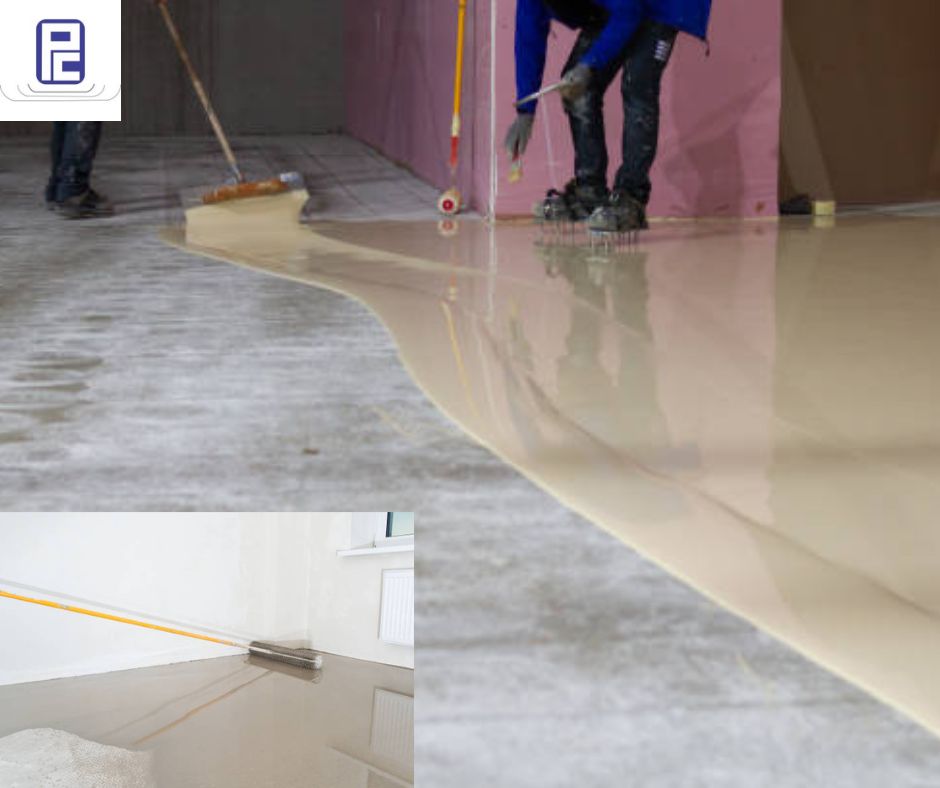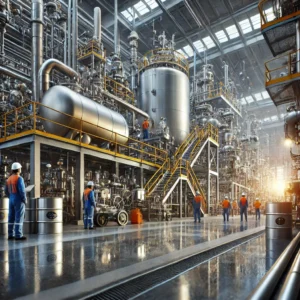Introduction to Epoxy Coatings
Epoxy coatings are essential in various industrial applications due to their exceptional protective qualities and versatility. They are used widely in epoxy resin formulations to safeguard materials from corrosion, chemicals, and environmental wear. This blog delves into the different grades or chemistries of epoxy coatings suitable for various corrosive environments, recommended hardeners, and their combinations. We’ll also explore the latest trends in epoxy coatings and their impact on sustainability.
Understanding Corrosive Environments: C1 to C5
The corrosive environments are categorized from C1 to C5, each indicating the severity of the corrosion:
– C1 (Very Low): Dry indoor environments.
– C2 (Low): Urban and rural areas with low pollution.
– C3 (Medium): Urban and industrial atmospheres with moderate sulfur dioxide levels.
– C4 (High): Industrial areas and coastal regions with high salinity.
– C5 (Very High): Marine and coastal environments with extreme salinity and industrial areas with aggressive atmospheres.
Epoxy Coatings for Different Corrosive Environments
C1 (Very Low) and C2 (Low)
For C1 and C2 environments, standard epoxy primers and epoxy primer paints are typically sufficient. These environments demand less robust protection due to minimal exposure to corrosive elements.
– Epoxy Resins: D.E.R. 383 (Dow), Epotec YD 011 (Aditya Birla)
– Hardeners: Polyamide Hardeners like Epotec TH 100 (Aditya Birla)
Suitable Combinations:
– Epoxy Primer Paint: D.E.R. 383 with Epotec TH 100 is ideal for indoor environments with minimal corrosive exposure.
– Epoxy Primer for Metal: Epotec YD 011 with Epotec TH 100 provides sufficient protection for metal structures in low-corrosion areas.
– Pearl Coating offering: A 2-coat system of a zinc-phosphate-based primer and standard top coat paint.
C3 (Medium)
In C3 environments, coatings need to withstand moderate pollution and sulfur dioxide levels. A higher-grade epoxy system is required to ensure durability and resistance.
– Epoxy Resins: D.E.R. 331 (Dow), Epotec YD 128 (Aditya Birla)
– Hardeners: Cycloaliphatic Amines like Ancamine 2422 (Evonik)
Suitable Combinations:
– Epoxy Primer for Metal: D.E.R. 331 with Ancamine 2422 provides excellent adhesion and corrosion resistance for moderate industrial atmospheres.
– Epoxy Floor Coatings: Epotec YD 128 with Epotec TH 100 is suitable for industrial flooring subjected to moderate chemical exposure.
– Pearl Coating offering: A High Build two coat offering with DFT reaching up to 200 microns. Primer + Paint system.
C4 (High)
C4 environments, such as industrial areas and coastal regions, require epoxy coatings with superior resistance to high salinity and chemicals. These environments expose materials to harsher conditions, necessitating more advanced protection.
– Epoxy Resins: D.E.R. 671 (Dow), Epotec YD 012 (Aditya Birla)
– Hardeners: Polyamidoamines like Versamid 140 (Cognis)
Suitable Combinations:
– Epoxy Phenolic Coating: D.E.R. 671 with Versamid 140 offers excellent chemical resistance and durability for high-salinity environments.
– Industrial Epoxy Flooring: Epotec YD 012 with Epotec TH 200 is ideal for heavy-duty industrial floors exposed to chemicals and heavy traffic.
– Pearl Coating offering: A 3-coat system comprising of primer, intermediate coat, and top coat. Intermediate can be zinc-rich or MIO-based coating.
C5 (Very High)
C5 environments are the most corrosive, demanding the highest grade of epoxy coatings, such as epoxy phenolic lacquers. These coatings offer maximum protection against extreme salinity and aggressive chemicals, making them suitable for marine and offshore structures.
– Epoxy Resins: D.E.R. 671-X75 (Dow), Epotec YD 017 (Aditya Birla)
– Hardeners: Cycloaliphatic Amines like Ancamine 2430 (Evonik)
Suitable Combinations:
– Metal Coating Paint: D.E.R. 671-X75 with Ancamine 2430 provides superior protection for metal structures in extreme environments.
– Epoxy Primer: Epotec YD 017 with Epotec TH 300 ensures excellent adhesion and long-lasting protection for both new and maintenance coatings in highly corrosive areas.
– Pearl Coating offering: An inorganic zinc silicate-based coating coupled with intermediate coats and a suitable weather-resistant top coat. DFT going up to 500 microns.
Latest Trends in Epoxy Coatings and Sustainability
Waterborne Epoxy Coatings
The shift towards waterborne epoxy coatings is one of the most significant trends in the industry. These coatings reduce VOC (Volatile Organic Compounds) emissions, making them more environmentally friendly. They offer similar performance characteristics as traditional solvent-based systems, making them suitable for various applications, including epoxy coating for steel and industrial coatings.
Waterborne epoxy coatings are increasingly used in applications such as epoxy floor coatings and industrial epoxy flooring, providing robust protection while minimizing environmental impact.
Bio-based Epoxy Resins
Another trend is the development of bio-based epoxy resins. These resins are derived from renewable sources, such as plant oils and sugars, reducing the carbon footprint associated with traditional petroleum-based epoxies. Companies like Dow and Aditya Birla are actively researching and developing these sustainable alternatives.
Bio-based epoxies are being integrated into various formulations, including epoxy phenolic coating and epoxy primer paint, offering a sustainable option without compromising performance.
Advanced Formulations for Enhanced Durability
Recent advancements in epoxy formulations focus on enhancing durability and performance. These include improved resistance to UV radiation, abrasion, and chemical exposure. Such innovations ensure longer-lasting protection, reducing the need for frequent recoating and thereby contributing to sustainability.
Enhanced formulations are particularly beneficial for industrial paint & coatings applications, where durability and longevity are critical. These innovations help protect assets in harsh industrial environments, reducing maintenance costs and downtime.
Smart Coatings
The advent of smart coatings that can self-heal and provide real-time data on the integrity of the coating is another exciting trend. These coatings can significantly extend the lifespan of industrial structures and reduce maintenance costs.
Smart coatings are finding applications in various sectors, including metal coating paint and industrial paint manufacturers in India, where advanced protective solutions are in high demand.
Impact on Sustainability
The latest trends in epoxy coatings are contributing positively to sustainability in several ways:
– Reduced VOC Emissions: Waterborne and low-VOC epoxy coatings reduce harmful emissions, improving air quality and worker safety.
– Renewable Resources: Bio-based epoxies decrease reliance on non-renewable resources, promoting a more sustainable industrial ecosystem.
– Extended Lifespan: Advanced and smart epoxy formulations enhance the longevity of coatings, reducing the frequency of recoating and associated environmental impact.
These sustainable practices are becoming increasingly important as industries worldwide strive to reduce their environmental footprint and adhere to stricter environmental regulations.
Conclusion
Epoxy coatings are indispensable in protecting materials in various corrosive environments, from C1 to C5. With different grades and chemistries tailored for specific conditions, they provide reliable protection and durability. The choice of epoxy resin and hardener combinations is crucial for achieving optimal performance in different settings. As the industry embraces the latest trends, including waterborne formulations, bio-based resins, and smart coatings, the impact on sustainability is profound. Industrial paint manufacturers in India and globally are continuously innovating to meet the evolving demands while prioritizing environmental considerations.
References
1. Dow Epoxy Resins Technical Data Sheets
2. Aditya Birla Chemicals Epoxy Product Information
3. Evonik Hardeners Product Portfolio
4. Cognis Versamid Polyamidoamine Hardeners Data
5. Industry Reports on Waterborne Epoxy Coatings and Sustainability Trends


